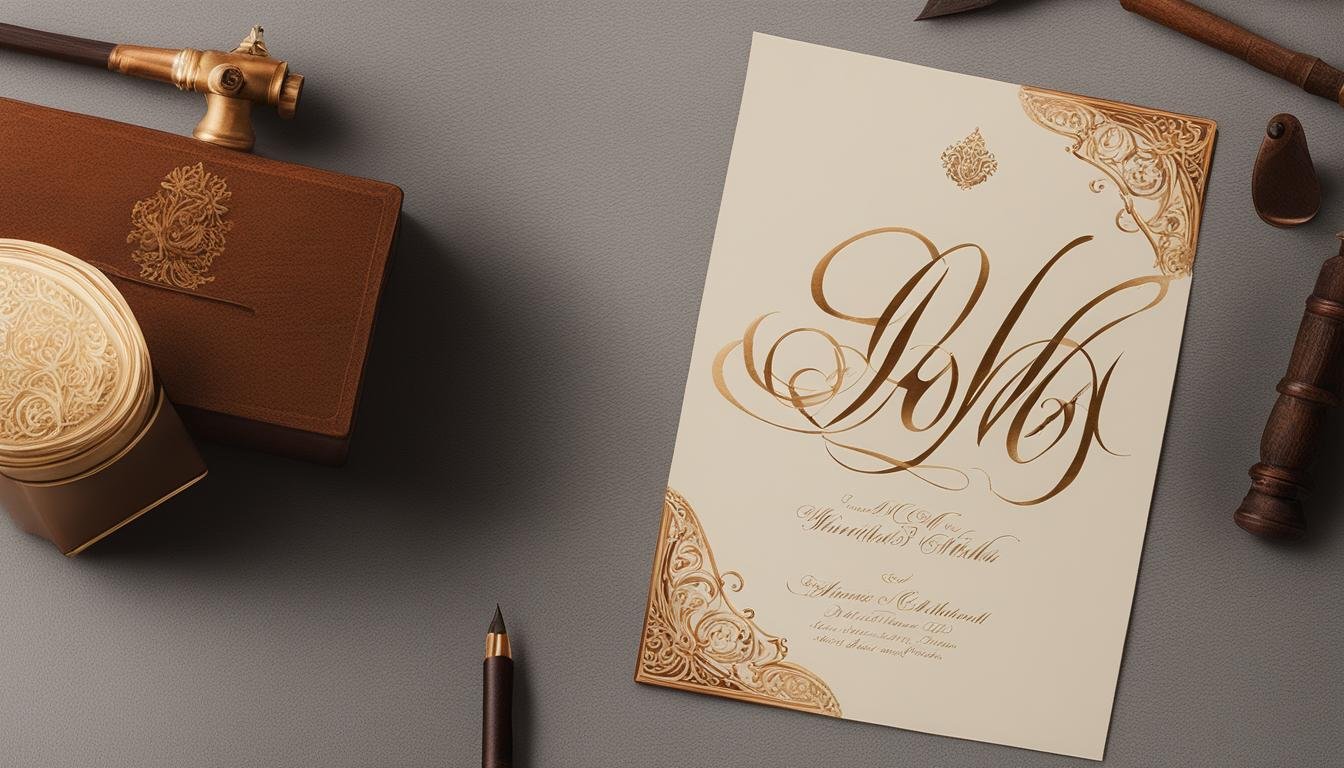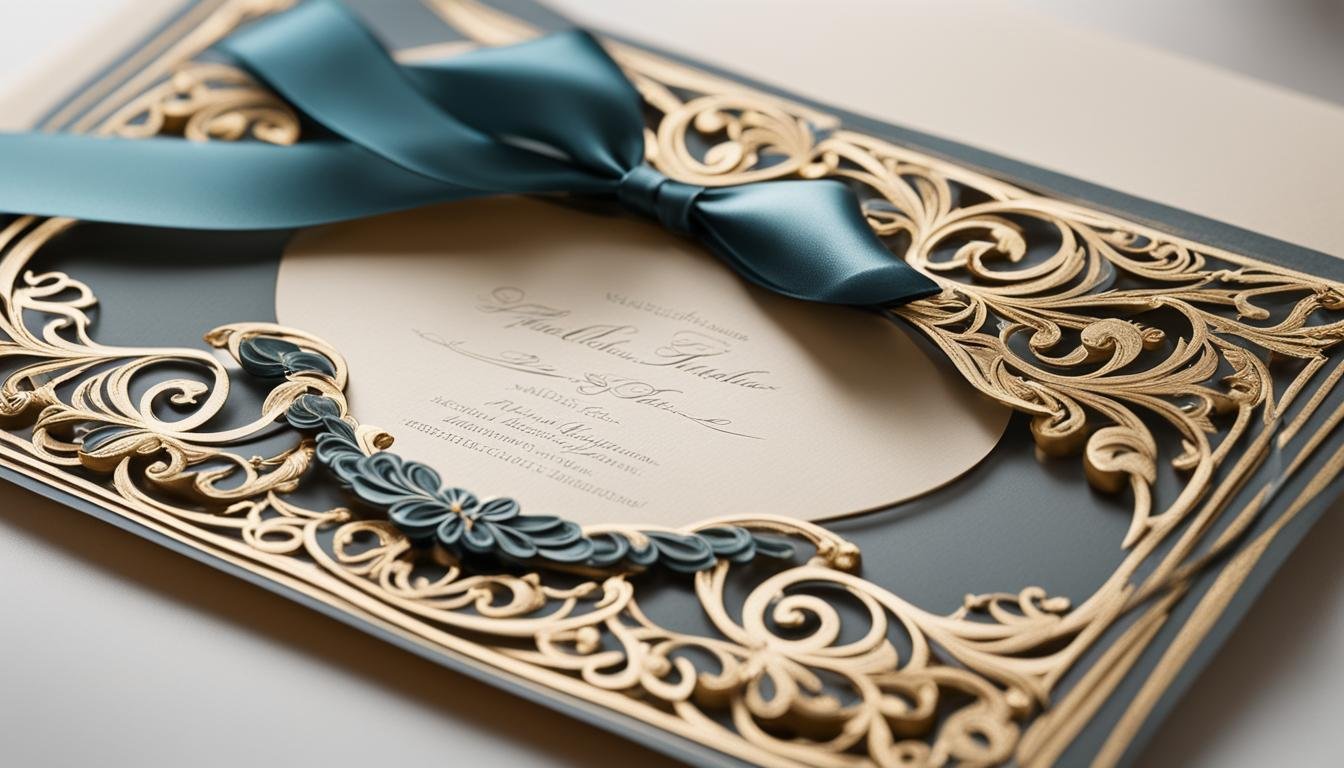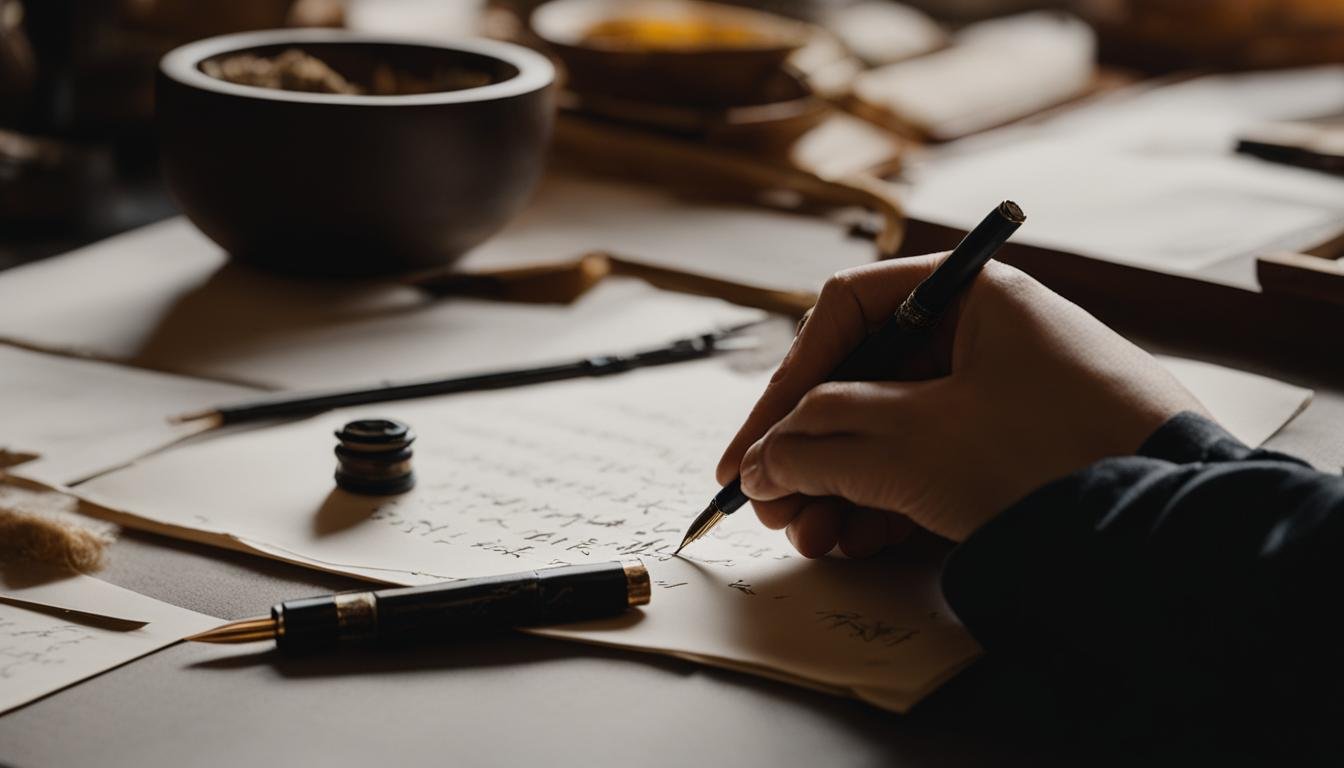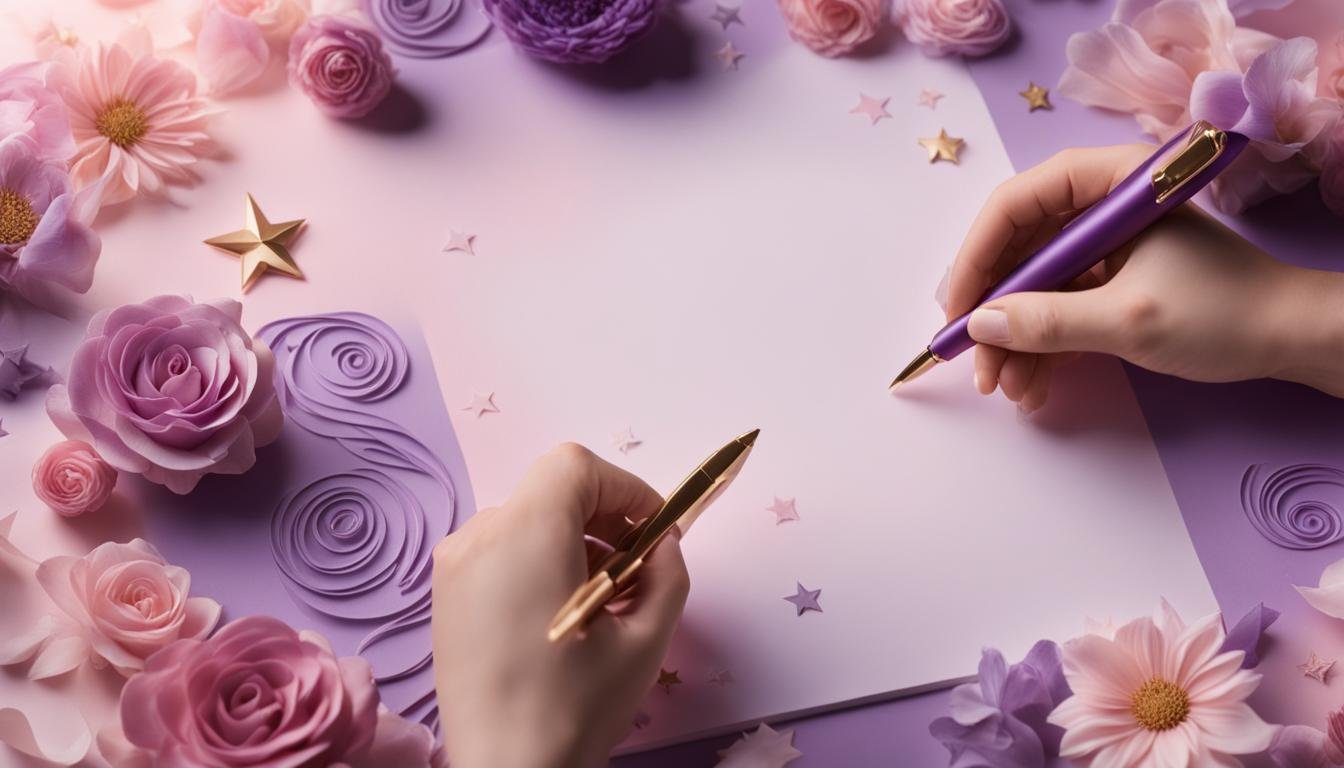Introduction to Copperplate Calligraphy: Master the Classic Style in No Time!
Welcome to our comprehensive guide on Copperplate calligraphy! If you’ve ever admired the elegant lines and timeless beauty of this traditional hand lettering style, you’re in the right place. In this article, we will delve into the art of Copperplate calligraphy, exploring its history, techniques, and tips for mastering this exquisite writing style.
Copperplate calligraphy, also known as Copperplate script or Copperplate handwriting, originated in the 17th and 18th centuries. It is characterized by its distinctive 55-degree slant and the contrast between thick and thin lines. This delicate and refined style has captivated calligraphers and enthusiasts for centuries.
Whether you’re a beginner looking to learn Copperplate or an experienced calligrapher wanting to enhance your skills, this guide will provide you with the knowledge and inspiration you need to create stunning Copperplate calligraphy.
Key Takeaways:
- Copperplate calligraphy is a traditional hand lettering style renowned for its elegant lines and contrast between thick and thin lines.
- This exquisite script originated in the 17th and 18th centuries and continues to be cherished by calligraphers worldwide.
- Learning Copperplate calligraphy requires a pointed pen, ink, and an understanding of the 55-degree slant and basic principles.
- Flourishing is a common practice in Copperplate calligraphy, adding intricate and beautiful extensions to the letters.
- Attending a workshop can provide structured learning and personalized guidance for mastering Copperplate calligraphy.
What is Copperplate Calligraphy?

Copperplate calligraphy is a traditional hand lettering style that originated in the 17th and 18th centuries. It is known for its elegant lines and letters, created with a pointed pen and ink. The script has a 55-degree slant and a contrast between thick and thin lines, which gives it a distinctive look. Copperplate calligraphy is still widely practiced and admired by calligraphers worldwide.
During the 17th and 18th centuries, Copperplate calligraphy gained popularity as a writing style. It is named after the copper plates used in old-fashioned printing presses. This traditional script focuses on consistency and adheres to specific rules and traditions. The 55-degree slant and the contrast between thick and thin lines contribute to the elegance of Copperplate calligraphy.
Copperplate calligraphy continues to captivate calligraphers today due to its timeless appeal. The script’s graceful and delicate nature adds a touch of sophistication to any piece of writing. Whether you are looking to explore a traditional hand lettering style or enhance your creative repertoire, Copperplate calligraphy offers a beautiful and rewarding experience.
Table: Key Features of Copperplate Calligraphy
| Feature | Description |
|---|---|
| Hand Lettering Style | Elegant script created with a pointed pen and ink |
| Origin | Developed in the 17th and 18th centuries |
| Slant Angle | 55-degree slant for visual appeal |
| Contrast | Differentiation between thick and thin lines |
| Consistency | Focus on precise letterforms and stroke consistency |
Copperplate vs Modern Calligraphy
Copperplate calligraphy and modern calligraphy are two distinct styles that offer different creative approaches to writing. Copperplate calligraphy is a traditional script that focuses on consistency and adheres to specific rules and traditions. It is known for its elegant lines, 55-degree slant, and contrast between thick and thin lines. On the other hand, modern calligraphy is a more creative and versatile style that allows for experimentation with size, color, and proportions.
In Copperplate calligraphy, black ink is predominantly used to create a sophisticated and timeless look. The focus is on mastering the techniques and creating letters that are precise and harmonious. Traditional calligraphers often dedicate years to mastering this script.
In contrast, modern calligraphy takes a freer approach. It embraces individuality, spontaneity, and personal expression. Artists are encouraged to explore their own unique style and experiment with different tools and materials. Modern calligraphy often incorporates colorful letters, playful compositions, and a more relaxed approach to rules.
“Copperplate calligraphy is a traditional script that focuses on consistency and adheres to specific rules and traditions, while modern calligraphy is a more creative and versatile style that allows for experimentation with size, color, and proportions.”
Both Copperplate and modern calligraphy have their own appeal and are loved by artists and enthusiasts worldwide. Whether you prefer the traditional elegance of Copperplate or the creative freedom of modern calligraphy, both styles offer endless possibilities for artistic expression and can be enjoyed by beginners and experienced calligraphers alike.
What are Calligraphy Flourishes?
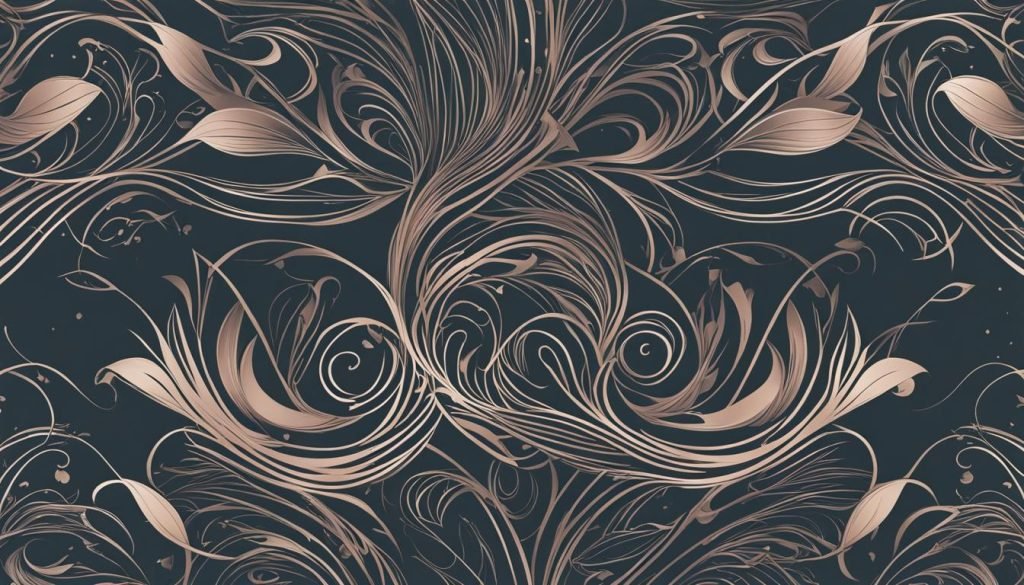
Calligraphy flourishes are elegant extensions that add a fancy and sophisticated touch to regular letters. They elevate the style and skill level of the calligraphy, creating variations and adding visual interest. Flourishing is a common practice in Copperplate calligraphy, with beautiful swirls, loops, and curves enhancing the overall look of the script. Different artists have their own signature flourishes, making each piece of calligraphy unique.
Flourishing in Copperplate calligraphy allows artists to showcase their creativity and add a touch of elegance to their work. These delicate extensions can be applied to both uppercase and lowercase letters, creating stunning visual effects. By carefully planning and executing the flourishes, calligraphers can achieve a more sophisticated and professional look in their Copperplate calligraphy.
Calligraphy flourishes can vary in complexity and style, from simple extensions to intricate and ornate designs. The key is to find a balance between elegance and legibility, ensuring that the flourishes enhance the overall composition without overpowering the letters. With practice and experimentation, calligraphers can develop their own unique flourishes and achieve mastery in the art of Copperplate calligraphy.
Table: Examples of Calligraphy Flourishes
| Flourish Style | Description |
|---|---|
| Swirls | Graceful and curving extensions that add movement and flow to the letters. |
| Loops | Circular or oval shapes that create loops and whorls, giving the calligraphy a more decorative look. |
| Curves | Gentle and fluid curves that add grace and elegance to the script. |
| Ornaments | Delicate and intricate designs that incorporate floral motifs, filigree patterns, or other decorative elements. |
In Copperplate calligraphy, the possibilities for flourishing are endless. Artists can combine different styles and techniques to create their own unique and fanciful extensions. However, it is important to maintain consistency and ensure that the flourishes enhance the overall composition without distracting from the legibility of the letters. With practice and a keen eye for design, calligraphers can master the art of flourishing in Copperplate calligraphy and create stunning pieces of handwritten art.
Copperplate Calligraphy Flourishing Examples
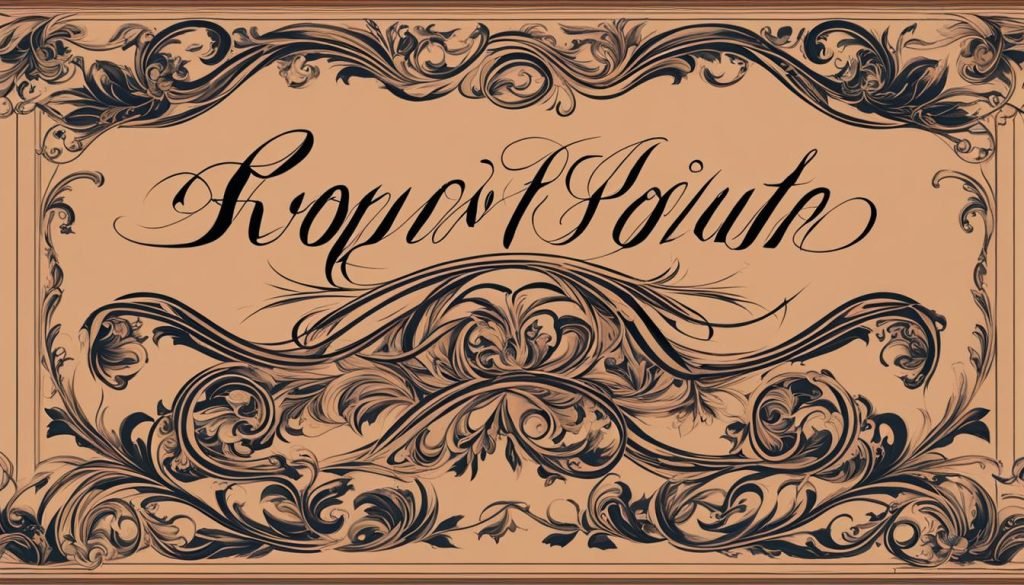
When it comes to Copperplate calligraphy, flourishing is an essential element that adds elegance and visual interest to the script. Flourishes are beautiful swirls, loops, and curves that can be incorporated into letters and words. They serve as decorative extensions that enhance the overall aesthetics of the calligraphy piece.
Historical examples of Copperplate calligraphy showcase intricate and delicate flourishes that demonstrate the skill and artistry of the calligraphers. These flourishes can be found in various parts of the letterforms, such as the ascenders, descenders, and even within the strokes themselves. Each flourish is meticulously crafted, adding a touch of sophistication and charm to the script.
Studying flourishing examples can provide valuable inspiration for creating your own unique flair in Copperplate calligraphy. Watching real-time demonstrations and studying historical works can help you understand the techniques and principles behind these beautiful swirls, loops, and curves. Incorporating flourishes into your Copperplate calligraphy allows you to express your creativity and personalize your writing style.
Flourishing Examples:
| Example | Description |
|---|---|
| An intricate flourish that elegantly extends from the ascender of the letter ‘h’, adding a touch of sophistication. | |
| A looping flourish that gracefully flows from the descender of the letter ‘g’, creating a sense of movement and fluidity. | |
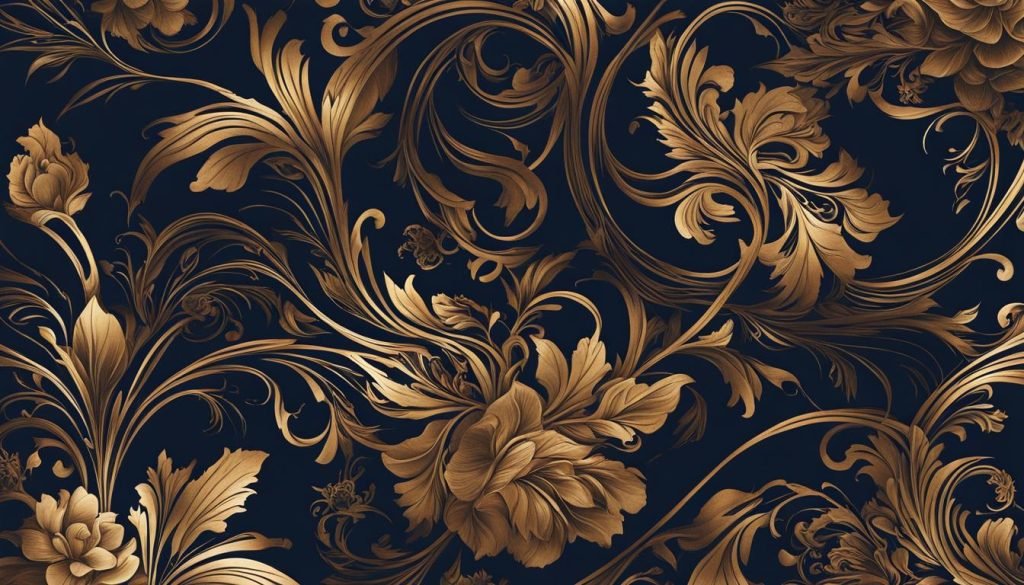 |
A delicate and intricate swirl that embellishes the stem of the letter ‘t’, adding an element of elegance and charm. |
By studying and practicing these flourishing examples, you can develop your skills and create your own unique swirls, loops, and curves in Copperplate calligraphy. Remember to experiment, have fun, and let your creativity flow as you add these beautiful embellishments to your letterforms.
Supplies Needed for Flourishing Copperplate
Flourishing in Copperplate calligraphy requires the use of traditional writing tools to achieve the desired elegant and sophisticated look. Here are the essential supplies you’ll need to start flourishing:
- Pointed Pen: A pointed pen is the key tool for creating those beautiful thick and thin lines in Copperplate calligraphy. It allows for pressure-sensitive strokes and precise control over the ink flow.
- Ink: Choose a high-quality ink that is suitable for pointed pen calligraphy. Sumi ink is a popular choice among calligraphers for its rich black color and smooth consistency.
- Nibs: There are various nibs available for Copperplate calligraphy, but for beginners, the Nikko G Nib is highly recommended. It has a moderate flex and provides excellent control.
- Pen Holder: Use a pointed pen holder that is comfortable to hold and fits the nib securely. The Moblique Pen Holder is a versatile option that can accommodate different nib sizes.
- Calligraphy Paper: Good-quality calligraphy paper with a smooth surface is essential to ensure smooth ink flow and prevent feathering or bleeding. Choose a paper that is specifically designed for calligraphy and suitable for use with pointed pens.
With these supplies in hand, you’ll be ready to embark on your journey of flourishing in Copperplate calligraphy and create beautiful and intricate designs.
Table: Essential Supplies for Flourishing Copperplate Calligraphy
| Supplies | Description |
|---|---|
| Pointed Pen | A tool for creating thick and thin lines in Copperplate calligraphy. |
| Ink | High-quality ink that provides rich black color and smooth consistency. |
| Nibs | Various nibs available for Copperplate calligraphy, with Nikko G Nib recommended for beginners. |
| Pen Holder | A comfortable and secure holder for the pointed pen and nib. |
| Calligraphy Paper | Good-quality paper specifically designed for calligraphy, ensuring smooth ink flow. |
Learning Copperplate Calligraphy Flourishing
Learning Copperplate calligraphy flourishing can be an exciting journey that allows you to add unique shapes and variations to your writing. With careful planning and dedicated instruction, you can develop the skills to create exquisite flourishes that enhance your Copperplate calligraphy pieces.
To begin your flourishing journey, it’s important to understand the basic principles of flourishing. This includes planning your flourishes ahead of time to ensure they complement the rest of your script. Consider the angle, size, and style of your flourishes, taking care not to interfere with legibility or cross thick lines in a clunky manner. Aim for clean, harmonious lines by crossing them at a 90-degree angle.
While learning to flourish, it’s beneficial to seek instruction from experienced calligraphers who can guide you through the process. They can provide insights on planning and executing flourishes effectively. Workshops and classes specifically focused on Copperplate calligraphy flourishing offer a structured learning environment where you can receive personalized feedback and refine your skills.
| Benefits of Learning Copperplate Calligraphy Flourishing |
|---|
| 1. Unlocking creativity: Flourishing allows you to add your unique artistic touch to Copperplate calligraphy, making each piece truly one-of-a-kind. |
| 2. Skill development: Mastering flourishing requires patience and practice, leading to the improvement of your overall calligraphy skills. |
| 3. Visual impact: Flourishes add elegance and visual interest to your writing, making it stand out and leaving a lasting impression. |
Instruction and Practice
Alongside instruction, regular practice is key to improving your flourishing skills. Set aside dedicated time to experiment with different shapes and sizes, allowing yourself to develop your own unique flourish style. As you practice, take note of the flourishes that resonate with you and incorporate them into your future pieces.
Remember, flourishing is an art form that requires patience and exploration. Embrace the journey of learning and let your creativity flow as you delve deeper into the world of Copperplate calligraphy flourishing.
The Big Secret to Calligraphy Flourishing
When it comes to calligraphy flourishing, careful planning is the big secret to achieving stunning results. While flourishing may appear spontaneous and inspired, most experienced calligraphers actually plan their flourishes ahead of time. Every flourish is the result of deliberate decisions and considerations. By understanding this concept, you can approach flourishing with intention and create more consistent and visually appealing results.
One of the keys to successful calligraphy flourishing is finding inspiration. Immersing yourself in the art of calligraphy, studying historical examples, and exploring different styles can provide the spark for your own unique flourishes. Allow your creativity to flow as you plan and sketch out your desired flourishes before putting pen to paper.
As you embark on the journey of calligraphy flourishing, it’s important to remember that practice is essential. Experiment with different shapes, sizes, and angles to find what works best for you. Embrace the process of trial and error, and don’t be afraid to make mistakes. With each practice session, you’ll refine your skills and develop your own personal style.
“Flourishing in calligraphy requires patience, practice, and a bit of spontaneous inspiration. By carefully planning your flourishes and allowing your creativity to guide you, you can achieve beautiful and eye-catching results.” – Calligraphy artist
The Art of Spontaneous Flourishing
While planning plays an important role in calligraphy flourishing, there is also room for spontaneity. As you gain confidence in your skills, you can start experimenting with improvisation and intuitive flourishes. Allow the pen to glide across the paper, embracing the joy of the creative process. Sometimes, the most stunning flourishes come from letting go and trusting your instincts.
Remember, calligraphy flourishing is an art form that combines careful planning with spontaneous inspiration. Finding a balance between these two elements is the key to creating flourishing that is both visually striking and uniquely your own. So let your imagination roam free, plan your flourishes with care, and let the magic happen as you bring your calligraphy to life.
The Basics of Flourishing
Flourishing in Copperplate calligraphy involves understanding the unique angle and following basic principles to create visually appealing designs. It is essential to consider legibility and size when adding flourishes to ensure they enhance the overall composition rather than distract from it.
When flourishing in Copperplate calligraphy, crossing lines should be done at a 90-degree angle to maintain a clean and harmonious look. Avoid crossing thick lines, as this can make the letters appear clunky and detract from the elegance of the script.
By adhering to these basic principles, beginners can avoid common mistakes and create more polished and professional-looking flourishes. Remember to practice regularly and experiment with different styles and angles to develop your unique flourishing technique.
Learning Copperplate Calligraphy at a Workshop
If you’re interested in learning Copperplate calligraphy, attending a workshop can provide you with the guidance and instruction you need to get started. Workshops are beginner-friendly and offer a structured learning environment, allowing you to learn the artform from experienced instructors.
During the workshop, you’ll learn essential techniques such as how to hold the pen correctly, understand nib alignment, and analyze the letters of the lowercase alphabet. These foundational skills are crucial for mastering Copperplate calligraphy and creating beautiful scripts with proper structure and alignment.
The small class sizes in workshops allow for personalized feedback and individual attention, ensuring that you can progress at your own pace and receive guidance tailored to your needs. Workshops often provide a calligraphy kit with all the essential tools and materials, allowing you to start practicing right away.
By attending a Copperplate calligraphy workshop, you’ll gain valuable insights and hands-on instruction that will accelerate your learning process. With the right guidance, you’ll soon be on your way to mastering the art of Copperplate calligraphy and creating elegant and sophisticated scripts.
Benefits of Learning Copperplate Calligraphy at a Workshop:
- Structured learning environment
- Experienced instructors
- Beginner-friendly
- Personalized feedback
- Hands-on instruction
- Small class sizes
- Calligraphy kit provided
| Workshop | Location | Date |
|---|---|---|
| Introduction to Copperplate Calligraphy | New York City | July 12, 2022 |
| Beginner’s Copperplate Workshop | Los Angeles | August 8, 2022 |
| Copperplate Calligraphy Bootcamp | Chicago | September 15, 2022 |
Here are some upcoming workshops where you can learn Copperplate calligraphy:
Attending a workshop is a fantastic way to immerse yourself in the art of Copperplate calligraphy and develop your skills in a supportive and inspiring environment. Sign up for a workshop near you and discover the beauty and elegance of this timeless writing style.
Conclusion
In summary, Copperplate calligraphy offers a multitude of benefits, combining elegance and creativity while fostering skill development. This traditional writing style adds a touch of sophistication and refinement to any project. By adhering to its consistent rules and practicing the art of flourishing, you can elevate your writing to a whole new level.
Through the practice of Copperplate calligraphy, you not only enhance your artistic abilities but also cultivate a sense of precision and attention to detail. This timeless script allows you to express your creativity while honing your penmanship skills. With dedication and guidance, you can master the art of Copperplate calligraphy and create stunning pieces of hand-lettered art.
So, why wait? Embrace the elegance of Copperplate calligraphy and unlock your creative potential through the world of calligraphy. Whether you’re a beginner or experienced artist, exploring this beautiful script will undoubtedly expand your artistic horizons and provide endless opportunities for self-expression.
FAQ
What is Copperplate calligraphy?
Copperplate calligraphy is a traditional hand lettering style that originated in the 17th and 18th centuries. It is known for its elegant lines and letters, created with a pointed pen and ink. The script has a 55-degree slant and a contrast between thick and thin lines, which gives it a distinctive look.
What is the difference between Copperplate and modern calligraphy?
Copperplate calligraphy is a traditional script that focuses on consistency and follows specific rules and traditions. On the other hand, modern calligraphy is more creative and allows for experimentation with size, color, and proportions. Copperplate calligraphy uses black ink for a sophisticated look, while modern calligraphy often incorporates colorful letters and relaxed rules.
What are calligraphy flourishes?
Calligraphy flourishes are elegant extensions that add a fancy and sophisticated touch to regular letters. They elevate the style and skill level of the calligraphy, creating variations and visual interest. Flourishing is a common practice in Copperplate calligraphy, with beautiful swirls, loops, and curves enhancing the overall look of the script.
Can you provide examples of Copperplate calligraphy flourishing?
Copperplate calligraphy offers endless possibilities for flourishing. Artists can create beautiful swirls, loops, and curves that enhance the overall look of the script. Historical examples of Copperplate calligraphy show intricate and delicate flourishes that add a touch of elegance to the letters.
What supplies do I need for flourishing in Copperplate calligraphy?
To flourish in Copperplate calligraphy, you will need traditional writing tools such as a pointed pen and ink. Recommended supplies include a beginner-friendly nib like the Nikko G Nib, a pointed pen holder such as the Moblique Pen Holder, good-quality calligraphy paper, and ink like Sumi Ink.
How can I learn to flourish in Copperplate calligraphy?
Learning to flourish in Copperplate calligraphy can be a challenging but rewarding process. It requires careful planning and understanding of the fundamentals. Experienced calligraphers often plan their flourishes ahead of time, considering the angle, size, and style. Understanding basic principles, such as avoiding interference with legibility and crossing lines at a 90-degree angle, can help beginners improve their flourishing skills.
What is the big secret to successful calligraphy flourishing?
One of the big secrets to successful calligraphy flourishing is careful planning. While it may appear spontaneous and inspired, most experienced calligraphers plan their flourishes ahead of time. Every flourish is the result of deliberate decisions and considerations. Understanding this concept can help aspiring calligraphers approach flourishing with intention and achieve more consistent and visually appealing results.
What are the basics of flourishing in Copperplate calligraphy?
Flourishing in Copperplate calligraphy involves finding a unique angle and style while following basic principles. It is important to ensure that flourishes do not interfere with legibility and that they are appropriately sized. Crossing thick lines should be avoided, as it can make letters appear clunky. When crossing lines, aim for a 90-degree angle to maintain a clean and harmonious look.
How can I learn Copperplate calligraphy at a workshop?
Attending a Copperplate calligraphy workshop is a great way to learn the art form from experienced instructors. Workshops provide a structured learning environment and offer guidance on holding the pen correctly, understanding nib alignment, and analyzing the letters of the lowercase alphabet. Beginners can benefit from hands-on instruction and personalized feedback provided in small class sizes. Workshops often include a calligraphy kit with essential tools and materials.
What are the benefits of practicing Copperplate calligraphy?
Copperplate calligraphy offers an elegant and timeless way to elevate your writing style. With its emphasis on consistency, traditional rules, and sophisticated appearance, Copperplate calligraphy can add a touch of elegance to any project. Learning to flourish in Copperplate calligraphy requires practice and an understanding of the basic principles, but with dedication and guidance, anyone can master this beautiful script.

